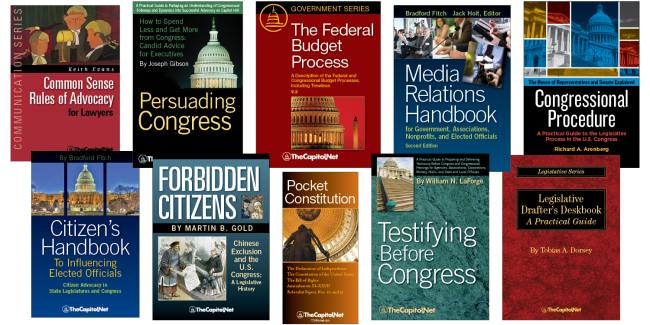From the Congressional Glossary – Including Legislative and Budget Terms
Committee of the Whole

The Committee of the Whole House on the State of the Union, more often referred to as the “Committee of the Whole,” is the House of Representatives operating as a committee on which all 435 House members serve. The House of Representatives uses this parliamentary device to take procedural advantage of a somewhat different set of rules governing proceedings in the Committee of the Whole than those governing proceedings in the House. The Committee of the Whole House on the State of the Union is convened for the preliminary consideration of bills from the Union Calendar under more convenient and expedited procedures and a smaller quorum requirement (100 members) than in the House (218 members). The purpose is to expedite legislative consideration.
See House “Rule XVIII – The Committee Of The Whole House On The State Of The Union.”
The Committee of the Whole – An Introduction
The working title of what is formally “The Committee of the Whole House (of Representatives) on the State of the Union.” The membership is composed of all House members sitting as a committee. Any 100 members present on the floor of the chamber to consider legislation comprise a quorum of the committee. Any legislation taken up by the Committee of the Whole, however, must first have passed through the regular legislative or Appropriations Committee, and have been placed on the calendar.
Technically, the Committee of the Whole considers only bills directly or indirectly appropriating money, authorizing appropriations or involving taxes or charges on the public. Because the Committee of the Whole need number only 100 representatives, a quorum is more readily attained, and legislative business is expedited. Before 1971, members’ positions were not individually recorded on votes taken in Committee of the Whole. (See Teller Vote.)
When the full House resolves itself into the Committee of the Whole, it supplants the Speaker with a “chairman.” A measure is debated and amendments may be proposed, with votes on amendments as needed. (See also Five-Minute Rule.) The committee, however, cannot pass a bill. When the committee completes its work on the measure, it dissolves itself by “rising.” The Speaker returns and the Chairman of the Committee of the Whole reports to the House that the committee’s work has been completed. At this time members may demand a roll-call vote on any amendment adopted in the Committee of the Whole. The final vote is on passage of the legislation.
General debate is the term for the period of time at the beginning of proceedings in the Committee of the Whole to debate a measure. The time is generally divided equally between the majority and minority floor managers.
The Senate used the Committee of the Whole to consider legislation until 1930, and to consider treaties and nominations until 1986. See § 1.12, Senate Committee of the Whole, in Forbidden Citizens.
Also see
- House
- Hour Rule / One Hour Rule
- Presiding Officer
- Quorum
- § 6.112, House versus Committee of the Whole, in Congressional Deskbook
- Chapter 2.J. Submitting Legislation; Chapter 4.D. Special Rules; Chapter 4.E. Privileged Business; Chapter 4.G. Debate; Chapter 4.K. Final Passage; Chapter 5.E. Unanimous Consent Agreements (“Time Agreements”); in Congressional Procedure
More
- Congress by the Numbers
- Congressional Leadership and Committees
- “Procedural Distinctions between the House and the Committee of the Whole,” CRS Report 98-143 (5-page PDF
 )
) - “Committee of the Whole: An Introduction,” CRS Report RS20147 (10-page PDF
 )
) - “Debate, Motions, and Other Actions in the Committee of the Whole,” CRS Report RL32200 (25-page PDF
 )
) - “Amendment Process in the Committee of the Whole,” CRS Report 98-439 (8-page PDF
 )
) - “General Debate in Committee of the Whole,” CRS Report RS20200 (7-page PDF
 )
) - “Commonly Used Motions and Requests in the House of Representatives,” CRS Report RL32207 (20-page PDF
 )
) - “House Offset Amendments to Appropriations Bills: Procedural Considerations,” CRS Report RL31055 (20-page PDF
 )
) - “House Rules and Precedents Affecting Committee Markup Procedures,” CRS Report 97-1045 (9-page PDF
 )
) - Committee of the Whole (United States House of Representatives) – Wikipedia
Courses
- Congressional Operations Briefing – Capitol Hill Workshop
- Drafting Federal Legislation and Amendments
- Writing for Government and Business: Critical Thinking and Writing
- Custom, On-Site Training
- Drafting Effective Federal Legislation and Amendments in a Nutshell, Audio Course on CD
- Congress, the Legislative Process, and the Fundamentals of Lawmaking Series, a Nine-Course series on CD
Publications
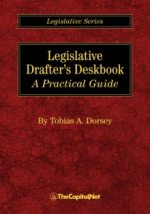
Legislative Drafter’s Deskbook: A Practical Guide
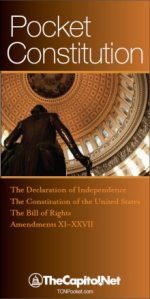
Pocket Constitution
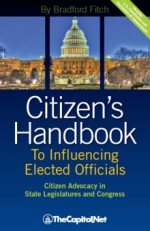
Citizen’s Handbook to Influencing Elected Officials: A Guide for Citizen Lobbyists and Grassroots Advocates
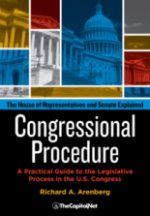
Congressional Procedure
CongressionalGlossary.com, from TheCapitol.Net
For more than 40 years, TheCapitol.Net and its predecessor, Congressional Quarterly Executive Conferences, have been teaching professionals from government, military, business, and NGOs about the dynamics and operations of the legislative and executive branches and how to work with them.
Our custom on-site and online training, publications, and audio courses include congressional operations, legislative and budget process, communication and advocacy, media and public relations, testifying before Congress, research skills, legislative drafting, critical thinking and writing, and more.
TheCapitol.Net is on the GSA Schedule, MAS, for custom on-site and online training. GSA Contract GS02F0192X
TheCapitol.Net is now owned by the Sunwater Institute.
Teaching how Washington and Congress work ™

